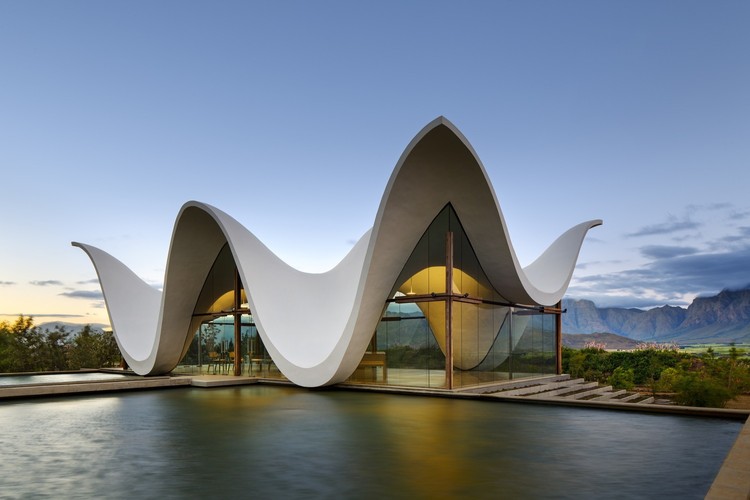
Let's think of a paper sheet. If we tried to stiffen it from its primary state, it couldn't support its own weight. However, if we bend it, the sheet achieves a new structural quality. The shells act in the same way. "You can't imagine a form that doesn't need a structure or a structure that doesn't have a form. Every form has a structure, and every structure has a form. Thus, you can't conceive a form without automatically conceiving a structure and vice versa". [1] The importance of the structural thought that culminates in the constructed object is then, taken by the relationship between form and structure. The shells arise from the association between concrete and steel and are structures whose continuous curved surfaces have a minimal thickness; thus they are widely used in roofs of large spans without intermediate supports.
In structural terms, they are efficient because they resist compression efforts and absorb at specific points on their surface, especially near the supports — small moments of flexion.
Present-day shells originate from Egyptian, Assyrian, and Roman civilizations, in which arched and vaulted structures were erected, using stone masonry and rudimentary types of concrete as the building material. The Pantheon in Rome and the Basilica of Hagia Sophia in Istanbul are spectacular examples that remain to this day. In those times, there was no structural calculation as we know it today; the buildings were erected using practical and empirical knowledge acquired by professionals through observation and repetition of procedures. Currently, modern computational models are used, such as the finite element method (FEM), which greatly assists in the design of these structures. After some time without significant advances in construction methods, shells evolved enormously from the beginning of the XX century, with the improvement of the reinforced concrete: a moldable material, very resistant to compression, bending, and in a certain way, traction.


